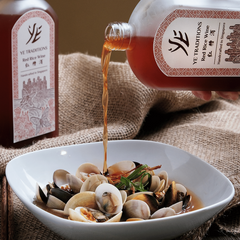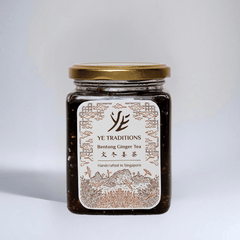How to Use Chinese Cooking Wine?
If you’ve ever prepared a Chinese dish, you've probably seen many recipes asking for: Chinese Cooking Wine. Or maybe you've seen a bottle of cooking wine when grocery shopping, and wondered: “What exactly does it do — and how should I use it?” As brewers of Chinese rice wine, we'll share our favourite recipes, and also the benefits of Chinese rice wine. You'll find that whether you’re stir-frying vegetables, braising pork or simmering a soup, a good cooking wine can elevate flavour, depth and aroma!
What is Chinese Cooking Wine?
At its core, Chinese cooking wine is a fermented rice wine made from glutinous rice (sometimes other rice types), water and a rice-yeast starter. It’s a staple in many Asian-style kitchens because the alcohol and other volatile compounds help extract aromas, tenderise meat and give an extra layer of flavour that plain wine or spirit cannot.
In fact, on our earlier blog on how to choose rice wine, we describe how rice wine as “a cornerstone of traditional Chinese cuisine and culture, prized for its rich flavours, health benefits and versatility”.
Unfortunately, you'll find that many mass-market Chinese cooking wines contain salt, artificial colouring or additives. But at Ye Traditions, we brew without salt, added sugar or preservatives. So when you cook with a high-quality rice wine, you’ll get a cleaner, more authentic flavour.
Why Use Chinese Rice Wine in Your Recipes?
Here are the main benefits:
1. Enhances aroma & flavour: The alcohol acts as a carrier for aroma compounds. When you stir-fry or braise, the wine helps release and distribute flavour into the dish.
2. Tenderises meat: In braises or marinades, the wine helps medium-heat cooking break down proteins a little—yielding more tender meat.
3. Balances dish complexity: The subtle sweetness and depth from rice wine adds a roundness to rich savoury dishes (like red-braised pork) or brings a fragrant lift to lighter stir-fries.
4. Gives authentic regional flavour: Using the “right” style of Chinese cooking wine helps anchor your dish in tradition. For example: a bold red rice wine for braises; a lighter yellow rice wine for soups and delicate stir-fries. (We cover this in “How to Use Rice Wine in Cooking”.)
5. Actually healthy and packed with probiotics: Many people don't think of this, but because rice wine is naturally fermented, the probiotics helps with digestion
How to Cook with Chinese Rice Wine?
We have a bunch of recipes that you can find here! But my favourites are the classic red rice wine chicken soup and yellow rice wine chicken soup! I really think good rice wines make a difference. Here are some tips I share with people about how best to utilize your rice wines.
1. Pick the right wine for the dish
- For braises, rich meats, deep flavour → choose a wine with stronger aroma and flavour (for example red rice wine style).
- For lighter dishes, seafood, soups, stir-fries → choose a smoother, more fragrant wine (for example yellow rice wine style).
- If you’re using a mass-market cooking wine, check for added salt or colouring—these can impact flavour!!
- If you’re using a clean, additive-free wine (like Ye Traditions’), you get more pure flavour.
2. Use the correct amount
- As a baseline: around 1–2 tbsp cooking wine per person in a stir-fry; for braises might be ½–1 cup depending on volume of liquid.
- Always account for the fact that most of the alcohol will cook off, but the flavour remains.
3. When to add it
- For stir-fries: after initial searing of ingredients, add wine and let it flame up briefly (if safe) or simmer a few seconds to drive off raw alcohol.
- For marinades: you can include wine as part of the marinade (30–60 minutes) before cooking.
- For braises or soups: add wine early together with other liquid (stock, water) so it integrates and aroma disperses slowly.
4. Adjust cooking time & heat
- If it’s a quick stir-fry, you’ll want high heat and fast cooking so that the wine aroma remains fresh.
- For slow cooking/braising: lower heat, longer time. The wine will mellow and deepen flavour.
There's really so much I'd like to share about rice wines, but this article will go out of control. Do check out our other blog posts on recipes, storage, and health benefits. The world of rice wine is truly fascinating, and choose the right rice wine to really elevate your flavors.






Leave a comment